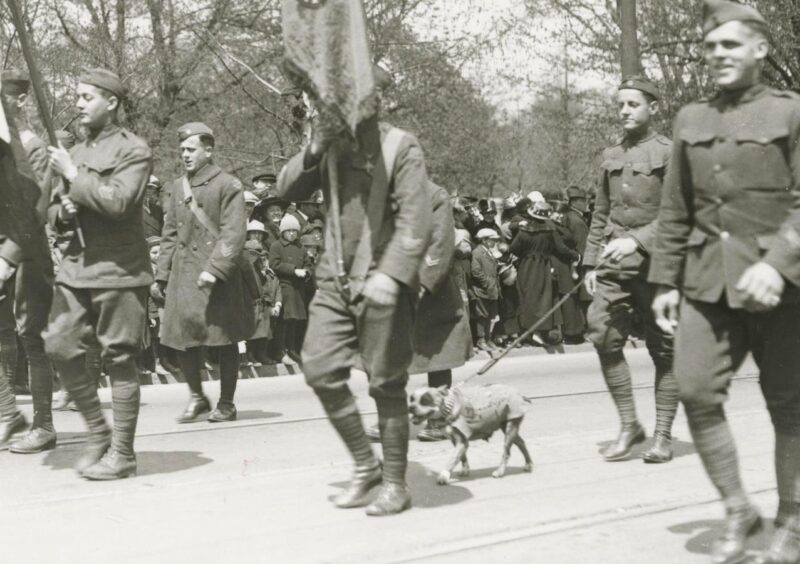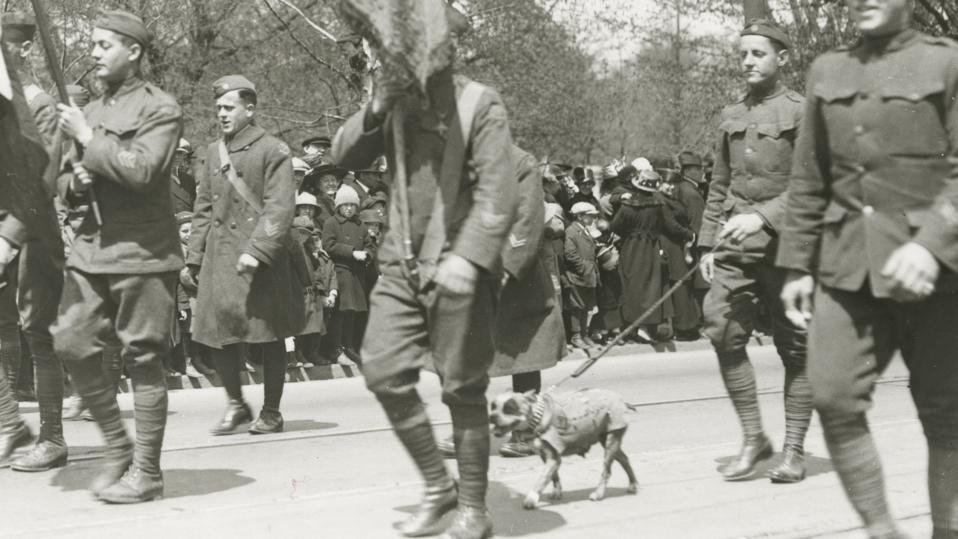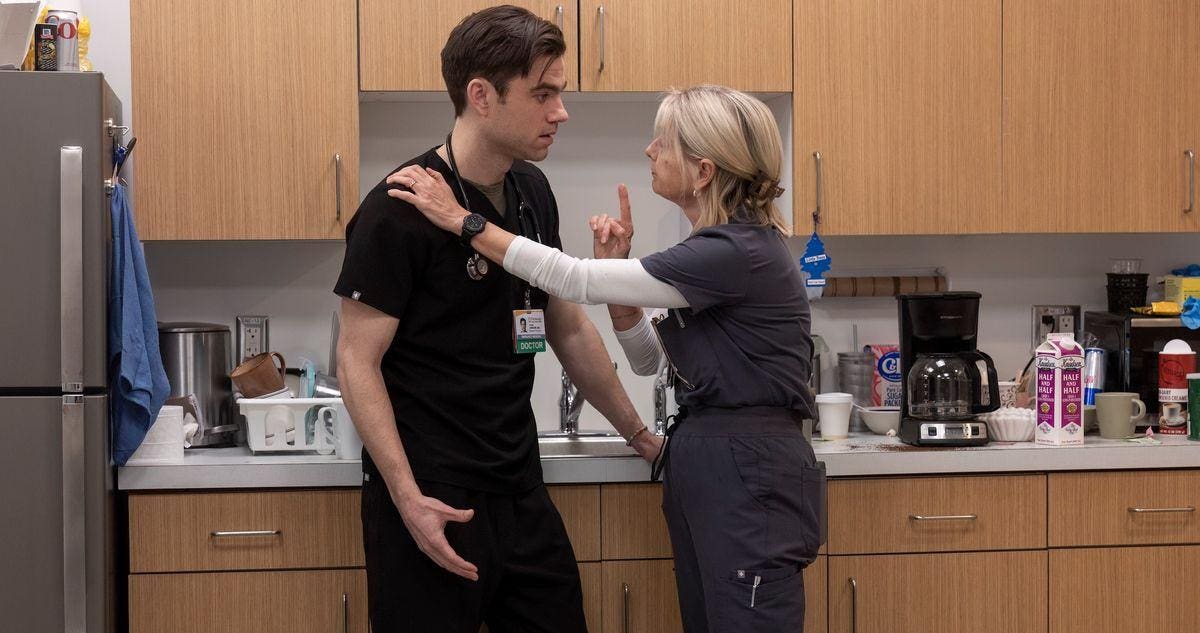We all know how the Allies won the war, but few know of the four-legged sergeant who helped make it happen.
Associated Press
In July of 1917, a dog found its way onto the grounds of Yale University. At the time, this was where the 102nd Infantry Regiment was training for their imminent deployment to France, amid the Great War. The dog was brindle-colored, with a stub for a tail that he still somehow managed to wag incessantly. It didn’t take long until he captured the soldiers’ hearts. They named him Stubby.
He was, by all appearances, a mutt. Perhaps part Boston terrier, and maybe some bull terrier, but no one really knew for sure. What everyone agreed on, however, was that Stubby had spirit. Eventually, he would go on to become the most decorated war dog in U.S. history, credited with saving lives, boosting morale and even capturing a German spy. By the time the war ended, he had seen 17 battles, survived mustard gas and received a medal from General John J. Pershing himself.
Here’s the story of how a scrappy stray, alongside his best friend, helped the Allies win World War I, as explained in the novel Sergeant Stubby.
A Stray Among Soldiers
Although he hung around all the men drilling on the training grounds, one grew especially close to Stubby. Private J. Robert Conroy was a 25-year-old soldier in training when he first met the dog. And much like all the other young men preparing for the uncertainties of war, Conroy found comfort in Stubby’s presence. Stubby quickly learned the rhythms of camp life: he’d reportedly learned how to march in step with the soldiers, and even how to salute (by raising his paw to his brow).
When the time came for the regiment to be shipped out to Europe, Conroy faced one serious problem: dogs weren’t officially allowed on troop transports. In fact, the United States didn’t even develop formal training programs for war dogs until the second World War.
So, as the story goes, Conroy made the decision to smuggle Stubby aboard the S.S. Minnesota, where he hid him underneath his overcoat. However, it wasn’t long until Stubby was eventually discovered by Conroy’s commanding officer. But just as Stubby had been trained to do in camp, he saluted. This small act alone was enough to win over the commanding officer, who ultimately allowed him to stay.
Stubby Goes to War
The Western Front might as well have been a world apart from the training fields at Yale. So when Stubby and Conroy arrived in France, they were instantly surrounded by mud, noise and death. But remarkably, Stubby adapted quickly.
As previously mentioned, war dogs were not yet a formal aspect of military operations, but this didn’t stop Stubby from inventing his own role within the 102nd Infantry Regiment.
When a soldier was wounded in no man’s land, or in opposing trenches, Stubby would be the one to find them. He learned to listen out for their calls, and would curl up beside them to comfort them after barking to alert paramedics of their location. This comes as no surprise, considering that, as research from the Journal of Wilderness Medicine explains, dogs’ hearing range is almost twice that of humans. Paired with their incredible sense of smell, their capabilities — even beyond search and rescue — become remarkable.
Most famously, if there were gas attacks, Stubby would be the one to issue an alert. It’s reported that, after surviving a gas attack in his first year of battle, Stubby became highly sensitive to the distinctive smell of mustard gas. Thereafter, he’d bite at soldiers’ legs to warn them to put on their masks before the canisters even landed. Stubby was also given his own specially designed mask, too.
Phenomenally, Stubby was also known for his uncanny sense of timing when it came to artillery fire. Soldiers swore Stubby could hear the whine of incoming shells before the soldiers could. This gave them invaluable extra seconds to duck for cover, meaning that his sharp instincts more than likely saved lives more than once.
There was one incident in particular that truly cemented his legend. During one campaign, Stubby reportedly spotted a German soldier, in US uniform, sneaking through the Allied trenches with a map. When the man called out to Stubby, he pinched his ears backward and began to bark — after which the spy ran. But before he could get away, Stubby lunged and clamped onto the man’s leg; he held on until American soldiers arrived to arrest him.
Newspapers back home would later describe the event as “Stubby capturing a German spy.” Although the story likely grew more and more embellished over time, it nevertheless became an enduring part of his origin story.
Coming Home A Mascot And A Hero
When the 102nd Infantry eventually went on to liberate the French town of Château-Thierry, the local women reportedly gave their thanks by fashioning a small chamois coat for Stubby. It was embroidered with the regiment’s insignia, and was eventually covered in service patches, medals and souvenirs from grateful soldiers.
When the war ended in 1918, Stubby came home to the United States with Conroy, and to a hero’s welcome, too. The mutt, who started life as a stray, became a decorated veteran after a year of battle. He went on to march in parades and to meet three separate U.S. presidents. He even became the mascot for the Georgetown Hoyas while Conroy attended law school there; much to viewers’ delight, he’d nudge the football around the field during halftime.
Of course, Stubby also went on to become the official mascot of the 102nd Infantry Regiment, too. He still is today.
Newspapers adored him. Children collected Stubby postcards. You could perhaps consider him America’s first ever animal celebrity, given his astonishing popularity in a time before internet virality. Among his honors were two wound stripes, a gold medal from the Humane Society, two Purple Hearts and an honorary rank: Sergeant Stubby.
When he eventually died in 1926, Stubby’s remains were preserved. Conroy went on to donate him to the American Red Cross Museum, where he remained for over a decade, until he was returned to Conroy’s custody. In great Stubby fashion, Conroy and his remains survived a house fire in 1954. Two years later, Conroy donated his remains to the Smithsonian Institution, where they remain today.
His little uniform is still intact, and his medals still gleam faintly beneath museum lights.
Are you an animal lover who owns a pet, maybe even a dog? Take the science-backed Pet Personality Test to know how well you know your little friend.









